Press Room
* All images in the Galathea3 slide show are available at higher resolution, by Russ Hopcroft
Image and Movie Clip Downloads
for Census of Marine
Zooplankton Sargasso Sea Cruise (10-30 April 2006)
Please contact N. Copley if you encounter difficulties with these downloads.
(hi res) = high resolution image
Deep-Dwelling Zooplankton:
.jpg) Euaugaptilus ractus
(copepod) photo by R. Hopcroft, University of Alaska - Fairbanks (UAF) (hi res)
Euaugaptilus ractus
(copepod) photo by R. Hopcroft, University of Alaska - Fairbanks (UAF) (hi res)
.jpg) Gaussia
princeps (copepod) photo by R. Hopcroft, University of Alaska - Fairbanks (UAF) (hi res)
Gaussia
princeps (copepod) photo by R. Hopcroft, University of Alaska - Fairbanks (UAF) (hi res)
.jpg) Lucicutia
aurita (copeods) photo by R. Hopcroft, University of Alaska - Fairbanks (UAF)
(hi res)
Lucicutia
aurita (copeods) photo by R. Hopcroft, University of Alaska - Fairbanks (UAF)
(hi res)
.jpg) Valdiviella insignis
(copepod) photo by R. Hopcroft, University of Alaska - Fairbanks (UAF) (hi res)
Valdiviella insignis
(copepod) photo by R. Hopcroft, University of Alaska - Fairbanks (UAF) (hi res)
Gelatinous Zooplankton:
 Athorybia (siphonophore - colonial jelly) photo by L. Madin, Woods Hole Oceanographic Inst. (WHOI) (hi
res)
Athorybia (siphonophore - colonial jelly) photo by L. Madin, Woods Hole Oceanographic Inst. (WHOI) (hi
res)
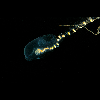 Rosacea (siphonophore - colonial jelly) L. Madin, Woods Hole Oceanographic Inst. (WHOI) (hi res)
Rosacea (siphonophore - colonial jelly) L. Madin, Woods Hole Oceanographic Inst. (WHOI) (hi res)
 Rosacea_tentacles (siphonophore - colonial jelly)
L. Madin, Woods Hole Oceanographic Inst. (WHOI)
(hi res)
Rosacea_tentacles (siphonophore - colonial jelly)
L. Madin, Woods Hole Oceanographic Inst. (WHOI)
(hi res)
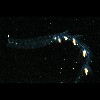 Halistemma (siphonophore - colonial jelly)
L. Madin, Woods Hole Oceanographic Inst. (WHOI) (hi
res)
Halistemma (siphonophore - colonial jelly)
L. Madin, Woods Hole Oceanographic Inst. (WHOI) (hi
res)
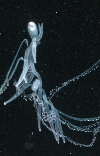 Rhizophysa (siphonophore - colonial jelly)
L. Madin, Woods Hole Oceanographic Inst. (WHOI) (hi
res)
Rhizophysa (siphonophore - colonial jelly)
L. Madin, Woods Hole Oceanographic Inst. (WHOI) (hi
res)
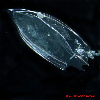 Chelophyes appendiculata (siphonophore) R. Hopcroft, University of Alaska - Fairbanks (UAF)
Chelophyes appendiculata (siphonophore) R. Hopcroft, University of Alaska - Fairbanks (UAF)
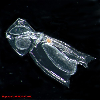 Abylopsis tetragona (siphonophore) R. Hopcroft, University of Alaska - Fairbanks (UAF)
Abylopsis tetragona (siphonophore) R. Hopcroft, University of Alaska - Fairbanks (UAF)
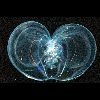 Thalassocalyce (ctenophone - comb jelly)
L. Madin, Woods Hole Oceanographic Inst. (WHOI) (hi
res)
Thalassocalyce (ctenophone - comb jelly)
L. Madin, Woods Hole Oceanographic Inst. (WHOI) (hi
res)
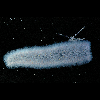 Pyrosoma_with_radiolarian (pelagic tunicate)
L. Madin, Woods Hole Oceanographic Inst. (WHOI)
(hi res)
Pyrosoma_with_radiolarian (pelagic tunicate)
L. Madin, Woods Hole Oceanographic Inst. (WHOI)
(hi res)
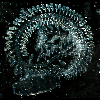 Dolioletta (pelagic tunicate - adult with young)
L. Madin, Woods Hole Oceanographic Inst. (WHOI) (hi res)
Dolioletta (pelagic tunicate - adult with young)
L. Madin, Woods Hole Oceanographic Inst. (WHOI) (hi res)
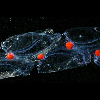 Salpa_maxima (pelagic tunicate)
L. Madin, Woods Hole Oceanographic Inst.(WHOI) (hi res)
Salpa_maxima (pelagic tunicate)
L. Madin, Woods Hole Oceanographic Inst.(WHOI) (hi res)
Pelagic Molluscs:
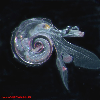 Atlanta peroni (pteropod) photo by R. Hopcroft, University of Alaska - Fairbanks, (UAF)
Atlanta peroni (pteropod) photo by R. Hopcroft, University of Alaska - Fairbanks, (UAF)
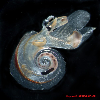 Atlanta peroni (pteropod ) R. Hopcroft, University of Alaska - Fairbanks, (UAF)
Atlanta peroni (pteropod ) R. Hopcroft, University of Alaska - Fairbanks, (UAF)
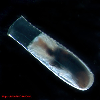 Cuvierina columnella (pteropod ) R. Hopcroft, University of Alaska - Fairbanks, (UAF)
Cuvierina columnella (pteropod ) R. Hopcroft, University of Alaska - Fairbanks, (UAF)
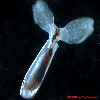 Cuvierina columnella, wings out (pteropod)
R. Hopcroft, University of Alaska - Fairbanks, (UAF)
Cuvierina columnella, wings out (pteropod)
R. Hopcroft, University of Alaska - Fairbanks, (UAF)
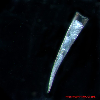 Creseis chierchiae (pteropod) R. Hopcroft, University of Alaska - Fairbanks, (UAF)
Creseis chierchiae (pteropod) R. Hopcroft, University of Alaska - Fairbanks, (UAF)
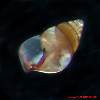 Limacina bulimodes (pteropod) R. Hopcroft, University of Alaska - Fairbanks, (UAF)
Limacina bulimodes (pteropod) R. Hopcroft, University of Alaska - Fairbanks, (UAF)
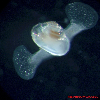 Limacina leseuri (pteropod) R. Hopcroft, University of Alaska - Fairbanks, (UAF)
Limacina leseuri (pteropod) R. Hopcroft, University of Alaska - Fairbanks, (UAF)
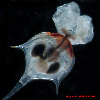 Diacria trispinosa (pteropod) R. Hopcroft, University
of Alaska - Fairbanks, (UAF)
Diacria trispinosa (pteropod) R. Hopcroft, University
of Alaska - Fairbanks, (UAF)
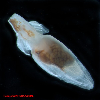 Pneumodermopsis macrochira (naked pteropod) R. Hopcroft, University of Alaska - Fairbanks, (UAF)
Pneumodermopsis macrochira (naked pteropod) R. Hopcroft, University of Alaska - Fairbanks, (UAF)
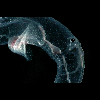 Cardiapoda (heteropod mollusc)
L. Madin, Woods Hole Oceanographic Inst. (WHOI) (hi res)
Cardiapoda (heteropod mollusc)
L. Madin, Woods Hole Oceanographic Inst. (WHOI) (hi res)
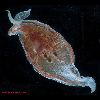 Phylliroe atlantica
(nudibranch) R. Hopcroft, University of Alaska - Fairbanks (UAF)
Phylliroe atlantica
(nudibranch) R. Hopcroft, University of Alaska - Fairbanks (UAF)
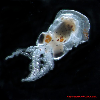 Baby octopus R. Hopcroft, University of Alaska - Fairbanks (UAF)
Baby octopus R. Hopcroft, University of Alaska - Fairbanks (UAF)
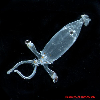 Baby squid R. Hopcroft, University of Alaska - Fairbanks (UAF)
Baby squid R. Hopcroft, University of Alaska - Fairbanks (UAF)
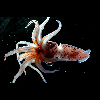 Histioteuthis sp. (squid)
L. Madin, Woods Hole Oceanographic Inst. (WHOI) (hi res)
Histioteuthis sp. (squid)
L. Madin, Woods Hole Oceanographic Inst. (WHOI) (hi res)
Crustacea:
![]() Thysanopods
obtusifrons (euphausiid -'krill') N. Copley, Woods Hole Oceanographic Inst. (WHOI) (hi res)
Thysanopods
obtusifrons (euphausiid -'krill') N. Copley, Woods Hole Oceanographic Inst. (WHOI) (hi res)
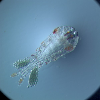 Sappharina opalina (copepod) R. Hopcroft, University of Alaska - Fairbanks (UAF)
Sappharina opalina (copepod) R. Hopcroft, University of Alaska - Fairbanks (UAF)
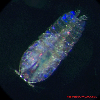 Sapphirina metallina (copepod)
R. Hopcroft, University of Alaska - Fairbanks (UAF)
Sapphirina metallina (copepod)
R. Hopcroft, University of Alaska - Fairbanks (UAF)
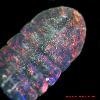 Sapphirina angulosa female (copepod) R. Hopcroft, University of Alaska - Fairbanks (UAF)
Sapphirina angulosa female (copepod) R. Hopcroft, University of Alaska - Fairbanks (UAF)
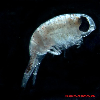 Brachyscelus crusculum (amphipod) R. Hopcroft, University of Alaska - Fairbanks (UAF)
Brachyscelus crusculum (amphipod) R. Hopcroft, University of Alaska - Fairbanks (UAF)
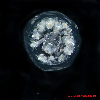 Phronima atlantica (amphipod - in 'barrel' with young) R. Hopcroft, University of Alaska -
Fairbanks (UAF)
Phronima atlantica (amphipod - in 'barrel' with young) R. Hopcroft, University of Alaska -
Fairbanks (UAF)
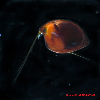 Macrocypridina castanea
(ostracod) R. Hopcroft, University of Alaska - Fairbanks (UAF)
Macrocypridina castanea
(ostracod) R. Hopcroft, University of Alaska - Fairbanks (UAF)
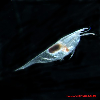 Conchaecilla daphnoides
(ostracod) R. Hopcroft, University of Alaska - Fairbanks (UAF)
Conchaecilla daphnoides
(ostracod) R. Hopcroft, University of Alaska - Fairbanks (UAF)
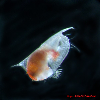 Conchoecissa imbricata
(ostracod) R. Hopcroft, University of Alaska - Fairbanks (UAF)
Conchoecissa imbricata
(ostracod) R. Hopcroft, University of Alaska - Fairbanks (UAF)
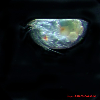 Euconchoecia chierchiae (ostracod with
young) R. Hopcroft, University of Alaska - Fairbanks (UAF)
Euconchoecia chierchiae (ostracod with
young) R. Hopcroft, University of Alaska - Fairbanks (UAF)
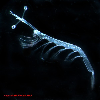 Lucifer typica
(decapod) R. Hopcroft, University of Alaska - Fairbanks (UAF)
Lucifer typica
(decapod) R. Hopcroft, University of Alaska - Fairbanks (UAF)
Other Groups:
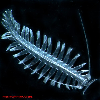 Tompteris sp. (polychaete - pelagic worm) R. Hopcroft, University of Alaska - Fairbanks (UAF)
Tompteris sp. (polychaete - pelagic worm) R. Hopcroft, University of Alaska - Fairbanks (UAF)
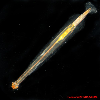 Eukrohnia sp.(chaetognath - arrow worm)
R. Hopcroft, University of Alaska - Fairbanks (UAF)
Eukrohnia sp.(chaetognath - arrow worm)
R. Hopcroft, University of Alaska - Fairbanks (UAF)
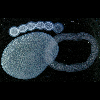 Colonial_radiolarians (large groups of
single celled animals) L. Madin, Woods Hole Oceanographic Inst.
(WHOI) (hi res)
Colonial_radiolarians (large groups of
single celled animals) L. Madin, Woods Hole Oceanographic Inst.
(WHOI) (hi res)
 Radiolarian C. de Vargas, Station Biologique de Roscoff (hi res)
Radiolarian C. de Vargas, Station Biologique de Roscoff (hi res)
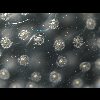 Close-up of Radiolarian colony shown above. C. de Vargas, Station Biologique de Roscoff
(hi res)
Close-up of Radiolarian colony shown above. C. de Vargas, Station Biologique de Roscoff
(hi res)
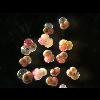 Globigerinoides
ruber_pink variety (Foraminifera - single-celled animals) C. de Vargas, Station Biologique de Roscoff
(hi res)
Globigerinoides
ruber_pink variety (Foraminifera - single-celled animals) C. de Vargas, Station Biologique de Roscoff
(hi res)
People and Gear:
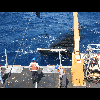 MOC10_launch
N. Copley, Woods Hole Oceanographic Inst. (WHOI) (hi res)
MOC10_launch
N. Copley, Woods Hole Oceanographic Inst. (WHOI) (hi res)
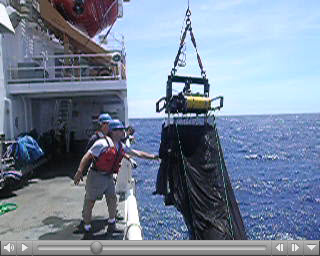 |
- M25_launch_movie (.mov) L. Madin,
Woods Hole Oceanographic Inst. (WHOI)
The quarter-meter MOCNESS has a 64 micron mesh for capturing smaller zooplankton forms such as foraminifera, radiolarians, and younger stages of many types of zooplankton, especially copepods, the world's most abundant type of zooplankton. This 'baby MOC' is only sent to about 200 meters depth. Like the other MOC's , it carries 9 nets that can be opened and closed by sending an electronic signal down the towing wire from the ship. |
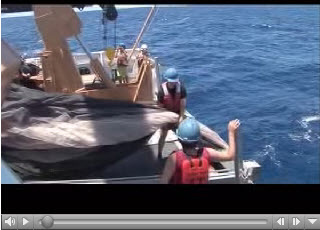 |
- MOC1_launch_and_recovery (.mov)
L. Madin, Woods Hole Oceanographic Inst (WHOI). - MOC1_launch_and_recovery (high-resolution .dv) L. Madin, Woods Hole Oceanographic Inst. (WHOI) The 1-meter MOCNESS has 335 micron mesh, a standard size for collecting typical zooplankton such as copepods, salps, and pteropods. This is the most commonly used MOC net system. It often samples to about 1000 meters depth. Progress is tracked on a computer on the ship as shown in this clip. The scientist can monitor the depth, water temperature and salinity in order to determine when to signal the nets to open and close. Once the MOCNESS is back on the ship, the cod-end bucket is removed from the net, poured into a pail and quickly taken to a cold room to help keep the animals alive. There, they are transfered to a tray for a snapshot photo record and experts begin examining the catch. |
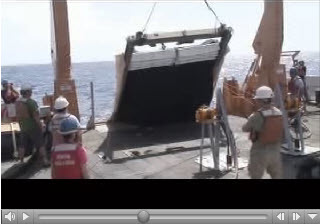 |
- MOC10_launch_RHB06-03 (.mov) D.
Lindsay, Japan Agency for Marine-Earth Science and
Technology (JAMSTEC) - MOC10_launch_RHB06-03 (high-resolution .dv) D. Lindsay, Japan Agency for Marine-Earth Science and Technology (JAMSTEC) The 10-meter MOCNESS has a mouth opening of 10 square meters. Usually, this large net will have 3mm mesh nets to catch larger zooplankton such as krill, shrimp, and deep-sea fish. This particular system has specially designed nets of 335 micron mesh to collect the more typical zooplankton. This system was able to sample all the way to the bottom of the sea, about 5000 meters (over 3 miles!). Because life is sparse in the deep-sea, the large MOC is needed in order to filter huge volumes of water, on the order of a quarter-million cubic meters! |
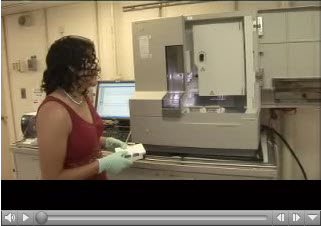 |
- Gene_sequencing_RHB_06-03 (.mov) L. Madin, Woods Hole Oceanographic Inst. (WHOI) - Gene_sequencing_RHB_06-03 (high-resolution .dv) L. Madin, Woods Hole Oceanographic Inst. (WHOI) Once zooplankton are brought on board the ship, expert taxonomists identify the organisms and then the DNA team immediately begins sequencing their genes to create a DNA 'barcode' that could be used in future research to quickly identify these species. This clip shows a tray of vials, each containing a tiny bit of tissue from an animal, being placed into the sequencer and views of the graduate student at the computer with a display of the results of the analysis. |
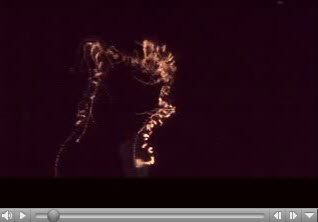 |
- RHB_06-03_zooplankton (.mov) L. Madin,
Woods Hole Oceanographic Inst. (WHOI) - RHB_06-03_zooplankton (high-resolution .dv) L. Madin, Woods Hole Oceanographic Inst. (WHOI) Meat-eating jellies, live zooplankton: 1. siphonophore gracefully moves through the water extending and contracting long stinging tendrils used to capture prey ; 2. ctenophore ('comb jelly') trying to 'catch' a stick offered by zoologist; 3. ctenophores with shimmering 'combs' that are tiny paddle-like blades that propel them through the water. |